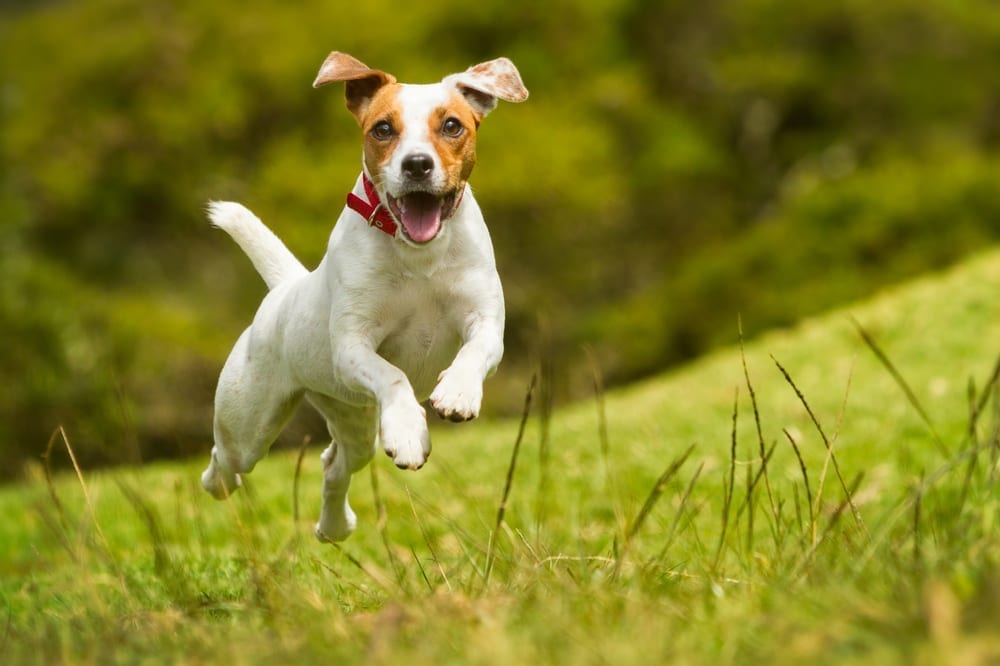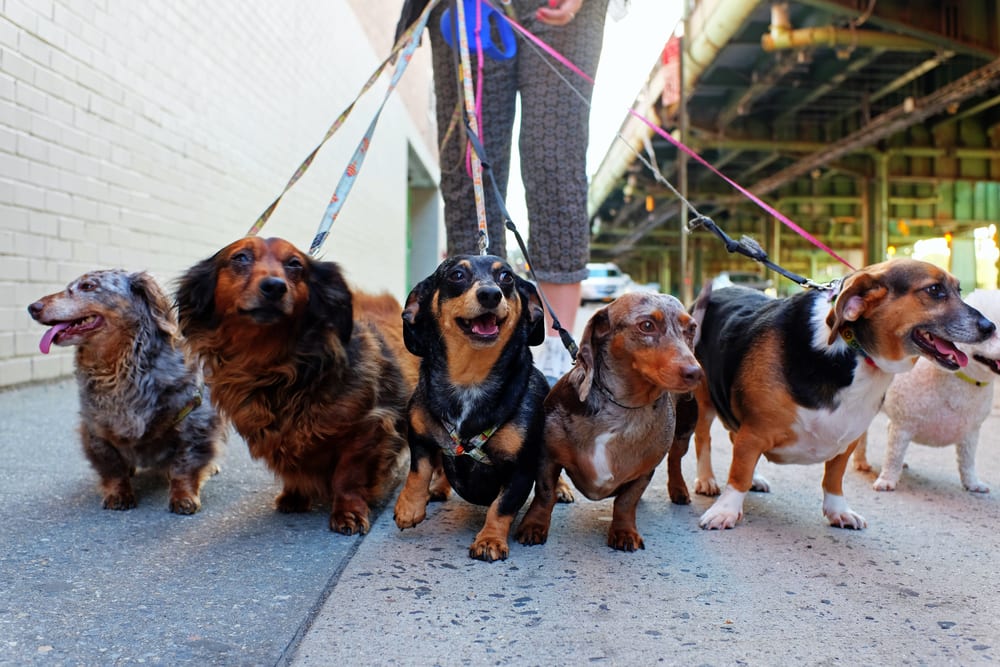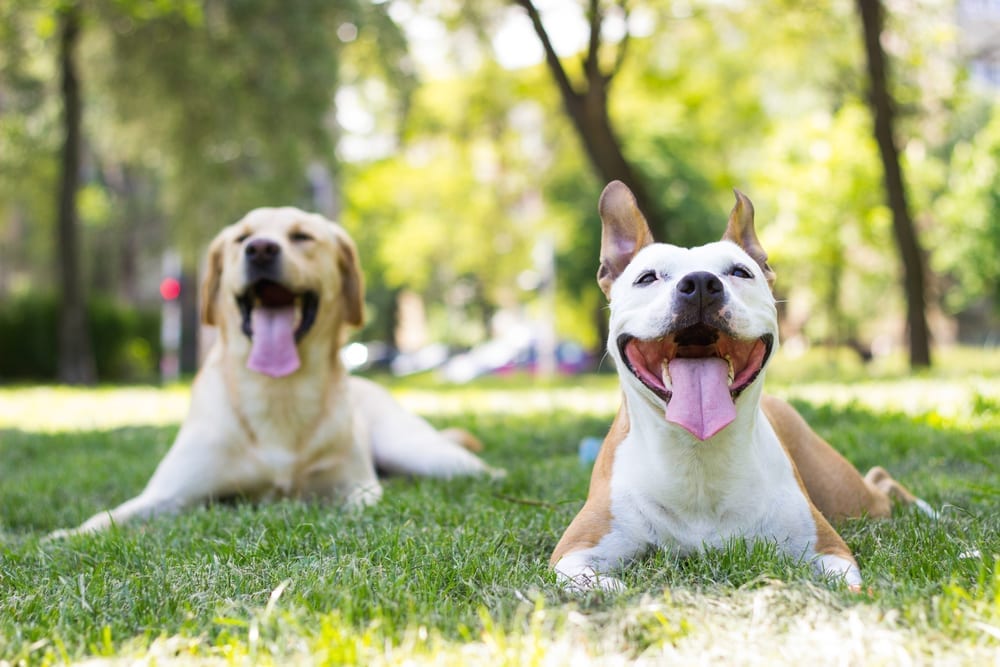Your dog is a sweetheart who loves people of all kinds. He welcomes visitors with an excited wag of his tail and he’s more than happy to cuddle up with a stranger. But when it comes to other dogs, your nice pooch turns into an overprotective guard dog. How can you teach your adult dog to play nice with others, and keep him from displaying anti-social behavior? Pawderosa has some advice on the best way to teach your dog friendly, social responses.
Quick disclaimer: if your dog is displaying aggressive behaviors, please consult a veterinarian. Pawderosa Ranch is not responsible for any harm that comes to your dog or other dogs based on this advice.
1. Make Sure Your Dog Gets Plenty of Exercise
Often, dogs bark or growl at other dogs partly because of their own pent up stress and energy. Make sure your gets an hour of exercise every day, at a minimum. You can break this up into 20 minute sessions as best fits your schedule, but a quiet, calm dog is an essential start to proper social behavior.
To keep exercise interesting for you and your dog, don’t do that same exercise repeatedly. After a 20 minute walk in the morning, try 20 minutes of fetch in the afternoon. Then, in the evening, try 20 more minutes of playtime or another brisk walk. Breaking up your dog’s exercise gives them something to look forward to, and keeps it from feeling like a chore.
2. Watch Your Behavior on the Leash
According to the Animal Humane Society, leashes can create a stressful environment for dogs meeting one another. Because a leashed dog can’t run away in case of danger, he may feel threatened when approached by another dog. Leashed walks also force dogs to approach one another head on, something that signals aggression in the canine world.
To break your dog’s habit of reactive behavior on the leash, teach your dog to focus on you instead of other dogs. Begin by rewarding your dog when you call his name, teaching him a positive association with focusing on you. Gradually, introduce this distraction technique on walks, asking your dog to focus on your when other dogs approach from a distance. You can decrease the distance between you and other dogs very, very slowly, teaching your dog a positive association with their approach. Don’t rush it. If your dog lunges and growls at another dog during this phase, you’ve gone too fast.
3. Introduce Your Dog to Others in a Calm, Neutral Environment
If your dog simply needs more socialization with other dogs, find a suitable environment to let him work on his canine social skills. Pick an area that neither dog calls home, like a dog park. Let the dogs approach each other with a loose leash, at first. It’s important that both owners remain calm and encourage positive interactions. Once both dogs seem comfortable, let them off the leash to interact.
Carefully watch the dogs for signals that one dog is overwhelmed or anxious. If a dog begins growling, his hair raises, or his tail stays in an upright, defensive position, call the dogs back to their respective owners. Use a calm, upbeat tone to maintain the positive experience for your dog.
If you’re especially concerned about facilitating your dog’s interaction with others, it may be a good idea to consider a canine behavioral expert to oversee the interaction. One easy way to facilitate socialization and activity for your dog in a controlled environment is to find a dog daycare with well-trained staff, who know the best way to facilitate productive, positive play.
If you’re looking for a way to keep your dog active and social while you’re away, reach out to us at Pawderosa Ranch. Our team of canine enrichment specialists is here to help your dog stay happy and healthy.







